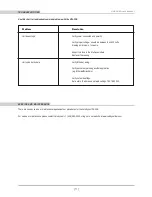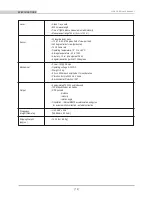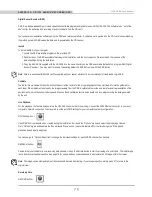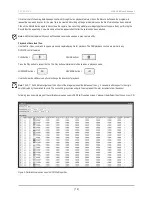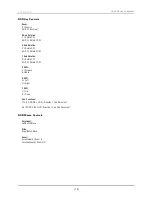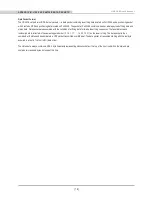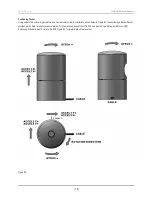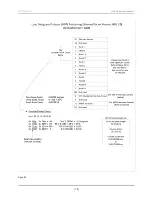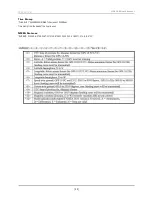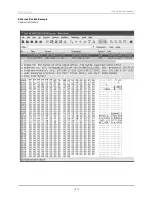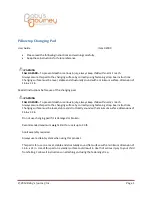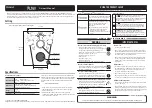
Calibration and Orientation
There are six axes of variation when determining the exact location of any given laser firing for the HDL-32. The axes are x, y, z, along with
rotational, horizontal, and vertical angles.
X, Y, Z. Both x and y offsets are zero and are calculated from the centerline of the device. The Z location of the firing should be considered to
be the distance from the bottom of the base plane to the center of the lenses, or 3.575 inches (9.0805 cm).
Figure D1.
The device isn’t calibrated at the factory for angular accuracy. The angular precision is 1/100 of a degree, and the device should repeat to
this level of accuracy. There are provisions for a pair of dowel pins to be located in the mating fixture, and this will provide repeatability in
case the device is removed and remounted. The reason for this is that the device needs to be calibrated in situ to whatever defines either the
x or y axis of the vehicle.
The HDL-32E’s laser spots are aligned at the factory to be within 1/2” of their true position at 100 feet. Therefore, no calibration of either the
deflection (horizontal) or rotational angle is necessary – both the horizontal angle and rotational laser angles are always zero.
The vertical angle of each laser is described in the XML file supplied with each unit and as listed above. This is the only calibration parameter
necessary to plot points in 3D space, so for the HDL-32E all db.xml calibration files are identical and contain only the vertical angle values as
listed above.
Laser Spot Size
The lasers project a well defined rectangular shaped spot that is approximately 4” wide by 2” tall at 100’ distance. The spot size at the source
of the HDL-32 is approximately 1/2” wide by 1/4” tall, causing the angular divergence to be 2.79 milliradians.
Distance Calibration
Distance calibration parameters are programmed into the HDL-32E firmware – no external adjustment for distance is needed. The HDL-32E
uses ((1023/1024) * 300,000,000 meters/sec) as the reference speed of light. However, as the true speed is affected by local atmospheric
conditions, the unit uses a closed-loop timing compensation scheme that calibrates each laser continuously and is the primary compensation
for thermally induced timing corrections.
[ 23 ]
HDL-32E User’s Manual
aPPendix d: caLiBration and orientation



